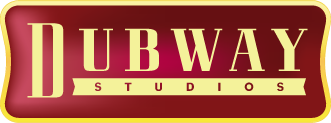A long time ago, Avid (then called Digidesign), allowed 3rd-party MIDI control surfaces to move the faders and the pans in Pro Tools. JL Cooper made a bunch of these surfaces. They were awful. Shortly after, Mackie and Digidesign collaborated on an improved system that used MIDI in a smarter way, called HUI. HUI is still in use today, and is the main way that 3rd-party companies make controllers for Pro Tools (SSL, Tascam, etc.). But MIDI is awful, and Digidesign then built their first serious control surface, ProControl. ProControl looked and felt like a real board, and used a proprietary language over ethernet called DigiNet. DigiNet powered ProControl, Control | 24, C24, and all the ICON boards like D-Command and D-Control. For the small-budget crowd, they made Command|8 , Digi 002 and 003 all of which use MIDI in a smart way like HUI.
When Avid purchased Euphonix, they got something special, EuCon. EuCon was the only serious competitor to DigiNet at the time. Avid promptly ended development for DigiNet and put all their resources into EuCon. The Artist series (we have an Artist Mix and Artist Control), MC Pro, Pro Tools | Dock, S3 (picture below), S5, and S6 are all built on EuControl. And EuControl is compatible with Logic, Nuendo and Pro Tools (and many more apps, too).
With Pro Tools 12, Avid released a free iPad app, Pro Tools | Control. This uses EuCon over Wi-Fi (or via the Lightning port) and is incredibly useful.
So that’s history. Here’s the lesson: EuControl uses ethernet and/or Wi-Fi and looks on the network for all available EuCon devices. Go to “EuCon Settings” in the menubar and you can see a window where you can grab any available surfaces on the network. When you move the Artist Mix and Control from room to room, remember the following:
Artist Mix and Artist Control plug into the ethernet switch (small black box), and the third cable on the switch goes to the Mac. All of our Mac Pro’s have (2) ethernet ports, and they automatically recognize that our LAN and the internet is on one port, and EuControl is on the other port. Ports are interchangeable. If you have time, fire up the controllers and experiment. It’s easy to get stuck in the habit of using only the mouse with Pro Tools. As soon as you break that habit, you’ll discover all the fast and intuitive ways you can run a session and shape sounds with a surface.
Take a look at Avid’s current line-up. These surfaces range in price from almost free to over $100k (!).






